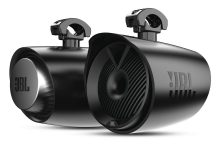Arizona Game and Fish Department cautioned traveling anglers and boaters recently against inadvertently importing a disease that causes erratic behavior in trout.
Whirling Disease, caused by Myxobolus cerebralis, is a microscopic parasite that attacks trout. The disease can result in high mortality rates among young fish.
“Whirling Disease” is so named because it may cause very young affected fish to swim in circles. Affected fish often find it difficult to feed or avoid predators.
There is no known cure for the disease, which attacks the soft cartilage of younger trout, especially rainbow, cutthroat, and brook trout. Brown trout and grayling are considered less susceptible.
The disease has not been documented in Arizona’s two native trout species, Apache and Gila.
Arizona has been relatively free of Whirling Disease, with only one outbreak discovered in a private pond, according to the Whirling Disease Foundation. But, neighboring states have had substantially higher levels of the disease, and Arizona officials fear anglers and boaters may inadvertently bring the disease into Arizona waters.
Neighboring states California, Nevada, Utah, New Mexico, and Colorado have all had outbreaks of the disease.
Whirling Disease was first detected in California in 1965 and is still present in Northern California throughout the Sacramento River Basin area. The disease was first detected in Nevada in 1966 and is currently established in the Truckee, Carson, Owyhee, East Walker, and Little Humboldt Rivers as well as regional creeks, lakes, and reservoirs — including Lake Tahoe.
Whirling Disease was first detected in Utah in 1991 in a private hatchery. Two state hatcheries and numerous private facilities have tested positive.
In the wild, the parasite has been detected in the Logan, Little Bear, Ogden, Weber, Provo, and Beaver rivers as well as regional creeks, lakes, and reservoirs.
Whirling Disease was discovered in Colorado in 1987 and is now found in nine state hatcheries, numerous private facilities, and all coldwater drainages except the Animas and North Republican rivers, according to the foundation. The disease was first detected in New Mexico in 1988 in private ponds and currently infects the Pecos, Cebolla, San Juan, Cimarron, Red, and Canones rivers as well as three of the state’s seven hatcheries.
Whirling Disease has not been detected in Arizona hatcheries, and has not been detected in public areas, according to the Whirling Disease Foundation.
Typical signs of Whirling Disease include darkened tail, twisted spine, deformed head, and erratic swimming behavior. Although fish exhibiting these symptoms may have genetic defects or afflictions other than Whirling Disease, persons observing such behavior in fish should contact Arizona Game and Fish or Arizona Department of Agriculture.
In order to avoid inadvertent spreading Whirling Disease, the foundation requests anglers and boaters use the following guidelines:
- do not transport live fish from one body of water to another,
- do not use trout, whitefish, or salmon parts as bait,
- do not dispose fish entrails or skeletal parts in garbage disposals or near bodies of water, and
- rinse mud and debris from equipment and apparel before leaving a known Whirling Disease-infected body of water.
To explain why fish waste may not be put down garbage disposals or dumped near watersheds, the foundation points out that dead, infected fish may release millions of nearly indestructible spores that may remain dormant for up to 30 years. Such spores typically survive most wastewater treatment systems, the foundation states.
The best method to scrub contaminated equipment and apparel is to soak or spray items with chlorine bleach and water solution. Depending upon the situation, the bleach and water ratio may vary between 1:32 to 1:1. Solution soak times range from 10 minutes to spray and wipe.
For more information contact www.whirling-disease.org.
Whirling Disease is not threat to those who consume fish, according to a 2001 Arizona Department of Agriculture release. “Whirling Disease is not transmittable to people,” said state veterinarian Rick Willer. “In fact, trout infected with the disease are edible.”
Arizona Game and Fish Department did not respond to inquiries made prior to this article’s deadline.































